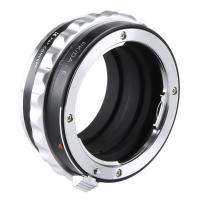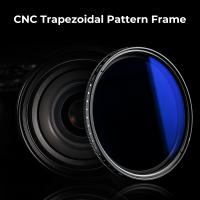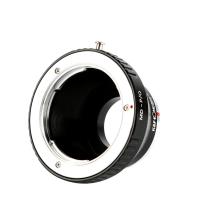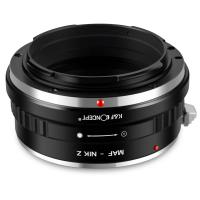What Are The Objective Lenses On A Microscope ?
The objective lenses on a microscope are a set of lenses that are responsible for magnifying the specimen being observed. They are located on the lower end of the microscope and are typically mounted on a rotating nosepiece. Microscopes usually have multiple objective lenses with different magnification powers, such as 4x, 10x, 40x, and 100x. Each objective lens has a different level of magnification and provides a different level of detail when viewing the specimen. By rotating the nosepiece, different objective lenses can be selected and brought into position, allowing the user to switch between different magnification levels without having to adjust the focus.
1、 Magnification: Increasing the size of the specimen for detailed observation.
The objective lenses on a microscope are a crucial component that determines the magnification and resolution of the specimen being observed. These lenses are typically located on a rotating nosepiece and are available in various magnification powers, such as 4x, 10x, 40x, and 100x. Each objective lens has a different level of magnification, allowing for a range of detailed observations.
The primary function of the objective lenses is to increase the size of the specimen for detailed observation. When light passes through the objective lens, it converges and forms a magnified image of the specimen. This magnification enables scientists and researchers to study the specimen's structure, morphology, and other important details that may not be visible to the naked eye.
The objective lenses work in conjunction with the eyepiece or ocular lens, which further magnifies the image formed by the objective lens. The combination of the objective and eyepiece lenses determines the total magnification of the microscope.
In recent years, advancements in microscope technology have led to the development of high-powered objective lenses with even greater magnification capabilities. These lenses allow for more detailed observations at the cellular and subcellular levels, aiding in various scientific fields such as biology, medicine, and materials science.
Moreover, modern microscopes often incorporate additional features such as oil immersion lenses, which further enhance the resolution and clarity of the observed specimen. These lenses require the use of a special oil with a refractive index similar to that of glass, minimizing light refraction and improving image quality.
In conclusion, the objective lenses on a microscope play a vital role in magnifying the specimen for detailed observation. With advancements in technology, these lenses continue to evolve, providing scientists and researchers with the ability to explore the microscopic world with greater precision and clarity.

2、 Resolution: Enhancing the clarity and sharpness of the image.
The objective lenses on a microscope are a crucial component that determines the magnification and resolution of the image. These lenses are typically located on a rotating nosepiece and are available in various magnification powers, such as 4x, 10x, 40x, and 100x. Each objective lens has a different level of magnification, allowing scientists and researchers to observe specimens at different levels of detail.
One of the primary functions of the objective lenses is to enhance the resolution of the image. Resolution refers to the ability of a microscope to distinguish between two closely spaced objects as separate entities. The higher the resolution, the clearer and sharper the image will be. The objective lenses achieve this by collecting and focusing light from the specimen onto the microscope's eyepiece or camera.
In recent years, there have been advancements in objective lens technology that have further improved resolution. For example, the development of high numerical aperture (NA) lenses has significantly enhanced the resolving power of microscopes. NA refers to the ability of the lens to gather light and resolve fine details. Higher NA lenses allow for better resolution and improved image quality.
Additionally, some objective lenses now incorporate advanced coatings and materials to reduce aberrations and increase light transmission. These improvements help to minimize distortions and improve the overall clarity of the image.
In conclusion, the objective lenses on a microscope play a vital role in enhancing the clarity and sharpness of the image. With advancements in lens technology, scientists and researchers can now achieve higher resolution and better image quality, allowing for more detailed observations and analysis.

3、 Numerical Aperture: Determining the light-gathering ability of the lens.
The objective lenses on a microscope are a crucial component that determines the magnification and resolution of the microscope. These lenses are responsible for gathering and focusing light onto the specimen being observed. They are typically located on a rotating nosepiece and can be interchanged to achieve different levels of magnification.
One important characteristic of objective lenses is the numerical aperture (NA), which determines the light-gathering ability of the lens. The NA is a measure of the lens's ability to capture and focus light rays from the specimen. It is calculated using the refractive index of the medium between the lens and the specimen, as well as the angle at which the light rays enter the lens.
A higher numerical aperture indicates a greater ability to gather light, resulting in improved resolution and image quality. This is because a larger NA allows for a greater range of angles at which light can enter the lens, capturing more details of the specimen. Therefore, objective lenses with higher numerical apertures are generally preferred for high-resolution imaging.
In recent years, there have been advancements in objective lens technology, leading to the development of lenses with even higher numerical apertures. These lenses have significantly improved the resolution and clarity of microscopic images, enabling scientists to observe finer details and structures within specimens. Additionally, the use of specialized coatings on objective lenses has helped reduce aberrations and increase light transmission, further enhancing image quality.
Overall, the objective lenses on a microscope, with their numerical aperture as a determining factor, play a crucial role in the quality and clarity of microscopic observations. Continued advancements in lens technology will likely lead to further improvements in resolution and image quality, enabling scientists to explore the microscopic world with greater precision and detail.

4、 Working Distance: The distance between the lens and the specimen.
The objective lenses on a microscope are a crucial component that determines the magnification and resolution of the microscope. These lenses are typically located on a rotating nosepiece and are available in various magnification powers, such as 4x, 10x, 40x, and 100x. Each objective lens has a different level of magnification, allowing scientists and researchers to observe specimens at different levels of detail.
One important aspect to consider when discussing objective lenses is the working distance. Working distance refers to the distance between the lens and the specimen being observed. It is an essential factor to consider as it affects the amount of light that reaches the specimen and the depth of field. A longer working distance allows for more light to reach the specimen, resulting in brighter and clearer images. Additionally, a longer working distance provides a greater depth of field, allowing for a larger portion of the specimen to be in focus at once.
The working distance can vary depending on the magnification power of the objective lens. Higher magnification lenses typically have shorter working distances, while lower magnification lenses have longer working distances. This is because higher magnification requires the lens to be closer to the specimen to capture more detail.
It is important to note that advancements in microscope technology have led to the development of objective lenses with improved working distances. Manufacturers are constantly striving to enhance the working distance of objective lenses to provide scientists and researchers with better imaging capabilities. These advancements have allowed for more flexibility in observing specimens, particularly those that are larger or require special preparation techniques.
In conclusion, the objective lenses on a microscope play a crucial role in determining the magnification and resolution of the microscope. The working distance, which refers to the distance between the lens and the specimen, is an important consideration when using objective lenses. Advances in microscope technology have led to improvements in working distances, providing scientists and researchers with enhanced imaging capabilities.







































